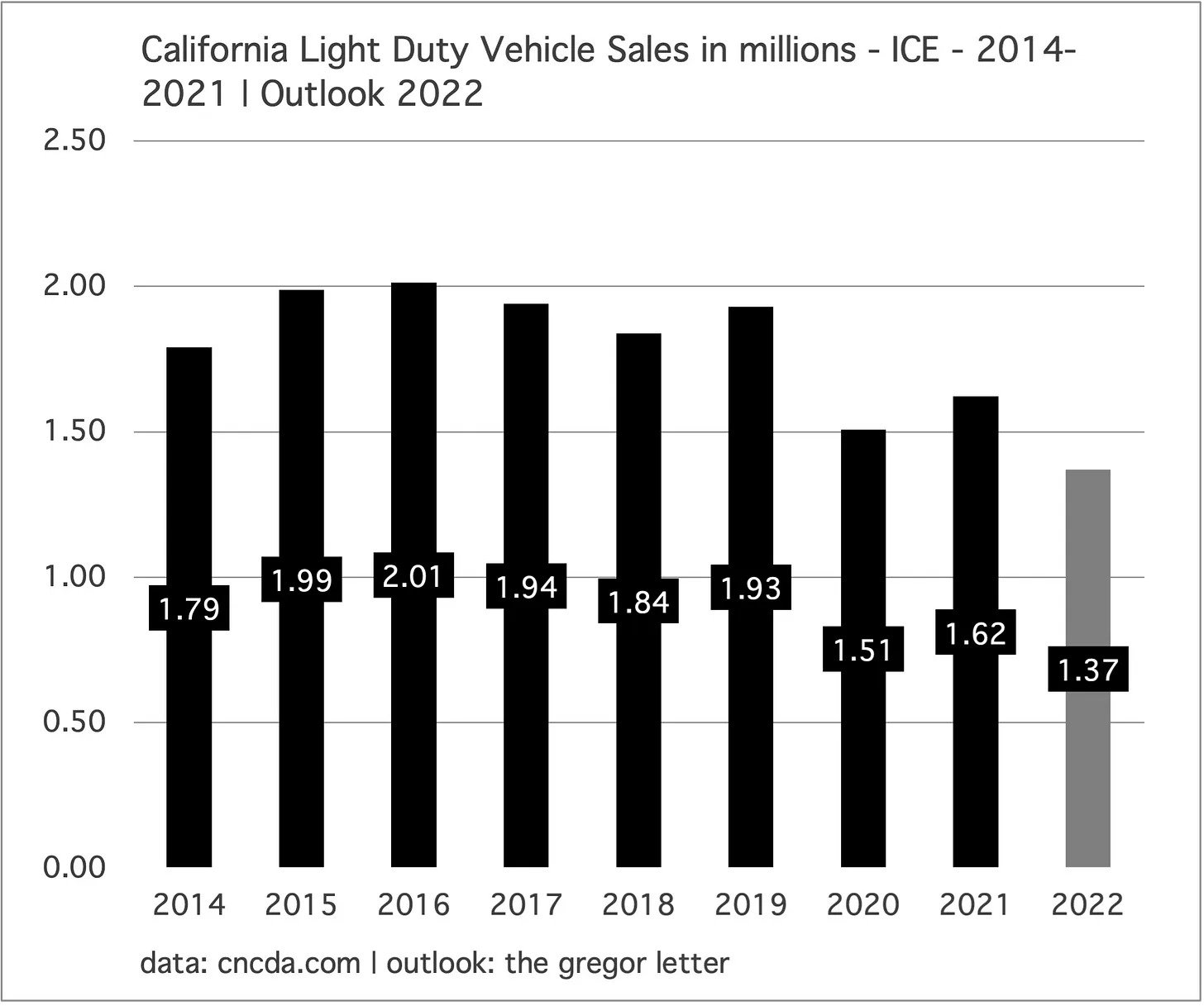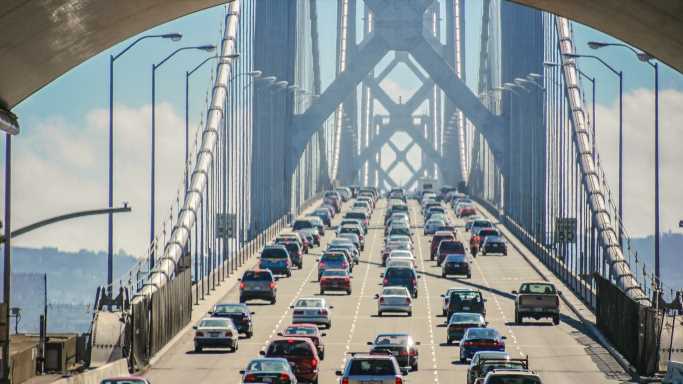It has taken two decades, but Californians have finally begun to burn less gasoline. The trend is irreversible and follows several steps the state took to reduce the use of internal combustion engines (ICE).
During the first 20 years of the 21st century, California’s population grew by more than 12% to reach nearly 40 million. Even given that population growth, gasoline consumption has fallen, according to long-time energy journalist Gregor Macdonald.
In his Monday newsletter, The Gregor Letter, Macdonald pointed to the state’s booming economy during the 2010s that created budgetary surpluses that the state could apply to cutting gasoline consumption:
[California] phased-in gasoline taxes, incentives for purchasers of EVs, disincentives for ICE ownership, and a buildout of public transportation [that] eventually produced moderate traction against fuel consumption. The final shove down the stairs came, of course, from the pandemic.
Macdonald estimates that at least 10% to 15% of the state’s workforce will permanently adopt flexible work-from-home arrangements.
The downside to reduced consumption has been a drop in gasoline tax revenue, a problem Macdonald acknowledges still needs to be solved. One solution, he noted, is a vehicles miles traveled (VMT) tax that would produce revenue from both ICE and electric vehicles (EVs). EVs currently pay no gasoline tax, and money for maintaining the state’s roads needs to come from somewhere.
EVs still continue to account for only a small portion of the state’s fleet of more than 30 million light-duty vehicles (passenger cars, sport utility vehicles, pickups). The current fleet comprises more than 800,000 EVs and more than 29 million ICE vehicles. In 2016, the peak year for light-duty vehicle sales in the state, just over 2 million new vehicles were sold.

The point, Macdonald claims, is not that EVs contribute such a small portion of the total fleet:
What’s important to recognize here, however, is that combined with all the other factors, including small net outward migration of the population (California lost a congressional seat in the 2020 census), the state stopped adding to its ICE fleet years ago. Hence, there is simply no growth driver for higher levels of gasoline consumption.
EV sales are forecast to reach 19% of all new car sales in California this year (some 315,000 units in a total market of around 1.7 million). EVs, once a drag on new ICE unit sales, are now leading the decline in California’s demand for gasoline.
Last August, California enacted a rule that will phase sales of ICE vehicles in the state by 2035. The California Air Resources Board (CARB) forecasts all-electric (ZEV) and plug-in hybrid electric (PHEV) vehicles will combine to account for 35% of all new car sales in 2026.

But it will take far longer to replace California’s fleet of 30 million light-duty vehicles and the U.S. fleet of some 284 million with EVs. The average life of a new vehicle sold in 2022 is around 12.2 years, according to IHS Markit. Because there are so many ICE vehicles in the fleet and because they last such a long time, it will take far longer to replace all the ICE vehicles Americans currently own.
By 2034, the last year of ICE sales in California, a new ICE vehicle could reasonably be expected to last 13 or 14 years. That implies that ICE vehicles would be on the road until around 2050.
Last year, the New York Times reported that even if EVs make up 60% of all new U.S. vehicle sales by 2050, more than half the total U.S. fleet will still run on gasoline. If the U.S. fleet is going to be fully electrified by 2050, then the federal government will have to adopt California’s ban on ICE unit sales beginning around 2035. Any bets on that happening?
Sponsored: Find a Qualified Financial Advisor
Finding a qualified financial advisor doesn’t have to be hard. SmartAsset’s free tool matches you with up to 3 fiduciary financial advisors in your area in 5 minutes. Each advisor has been vetted by SmartAsset and is held to a fiduciary standard to act in your best interests. If you’re ready to be matched with local advisors that can help you achieve your financial goals, get started now.
Source: Read Full Article

